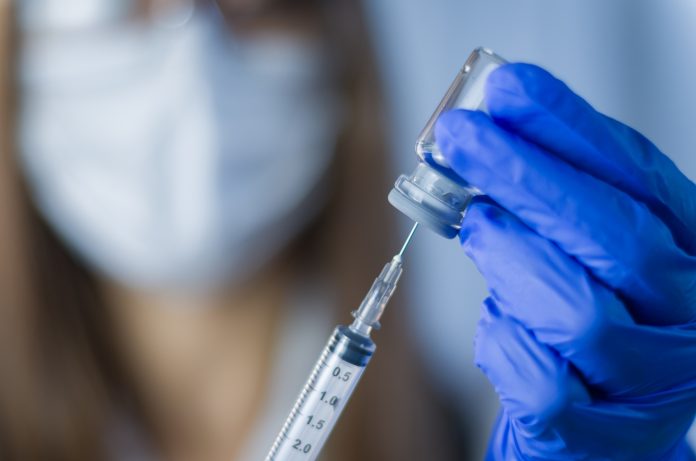Dr Nenad Miljković, President-elect of the European Association of Hospital Pharmacists (EAHP), outlines the critical role of cold chain management in maintaining the efficacy and safety of vaccines
Hospital pharmacists play a pivotal role in the procurement, storage, handling, and transportation of vaccines for healthcare system settings, responding to their unique nature and requirements to secure cold chain management throughout the supply chain. Multi-stakeholder collaboration across the supply chain is a prerequisite for providing a reliable path for vaccines from the point of production to the point of administration. Furthermore, advancing cold chain management is essential to ensure the integrity of the cold chain and provide an environment where temperature control standards may be followed strictly, allowing vaccines to be applied safely and effectively.
Cold chain management and vaccine efficacy
Throughout the COVID-19 pandemic, the topic of vaccination has received a great deal of attention. The use of vaccines has always been paramount for protecting the health of patients, hospital pharmacists, other healthcare professionals, and citizens in every 36 EAHP member countries. Like any medicine, vaccines have benefits and risks. Although highly effective, no vaccine is one hundred percent effective in preventing disease or one hundred percent safe for all vaccinated people. Effectiveness in an individual depends on several factors, including age, other diseases or conditions that an individual might have, such as allergies, or previous contact with the disease. However, the effectiveness of vaccines can be significantly compromised if their integrity is not maintained throughout the cold chain. Failure to handle and store vaccines properly can reduce their potency, leading to inadequate immune responses in patients and poor protection against disease, outcomes that hospital pharmacists, together with their colleagues in the multidisciplinary healthcare team, strive to prevent at all costs.
Challenges with securing the cold chain commence within the manufacturing processes of vaccines, where the time delay between processing and packing may vary and pose a risk to vaccines’ integrity. Following manufacturing guidelines, stakeholders involved in the transport and distribution of vaccines should ensure that the cold chain has no interruptions, regardless of numerous transportation segments. If carried out improperly, the loading and unloading of vaccines, together with environmental temperature variations, can consequently lead to vaccine degradation. Moreover, improper placement of sensors on transportation boxes and inappropriate monitoring influence temperature control and additionally accelerate a loss of vaccine potency. When delivered to a healthcare setting, handling and storing vaccines represent two significant challenges in securing the cold chain. Depending on how vaccines are stored in the refrigerator, obstruction of cool airflow may occur due to freezer overcrowding, leading to insufficient and constant cooling of vaccines. Environmental conditions also bear additional risks to vaccines’ integrity if ambient high or low-temperature conditions affect temperatures obtained within the cold chain. Therefore, robust storage and inventory management procedures are of the essence to decrease the risks of temperature fluctuations.
Identifying and minimizing risks for different vaccine types
To minimize risks and to ensure the effectiveness of vaccines, storage, and transport should strictly follow the recommendations of the particular manufacturer. Different types of vaccines require different storage and transport conditions. Vaccines that are sensitive to freezing should be kept at temperatures ranging between 2°C and 8°C. Those that contain viral and/or lyophilized strains can be stored at temperatures between – 15°C and – 25°C. Messenger RNA vaccines (mRNA) that some manufacturers have developed against the coronavirus required in the past even lower temperatures. In case of wrong storage or incorrect handling of the vaccine, it should be safely discarded and removed from the administration process according to the national regulations. The involvement of healthcare professionals is crucial since they are trained in the processing of vaccines and detecting expired or compromised vaccines, broken vials or syringes, and empty vials. Common errors include storing vials loosely and not respecting instructions. Hospital pharmacists can help prevent these errors by storing each type of vaccine or diluent in its original packaging and a separate container. Other functions they carry out cover the regular monitoring of storage equipment to identify temperature excursions quickly to guarantee the viability of vaccine supply and the safety of patients.
The first steps in detecting potential temperature variations, which may affect the intended efficiency of vaccines, refer to the assessment of risks identified throughout all stages of the supply chain, including storing after manufacturing, sales and procurement, transport, and finally, storage and use in a healthcare facility. These risks may be identified through failure mode and effect analysis (FMEA), intended to detect steps in handling vaccines with the most significant potential for a failure to occur, consequently influencing vaccine stability and integrity. Detected risks are to be prospectively considered in a broader framework of quality control and management in a healthcare setting, along with a retrospective overview of previously detected risks in handling vaccines within the cold chain. When detected, mitigating, controlling, and reducing risks become a priority. This can be achieved through setting up processes based on protocols and procedures, as well as through additional training and education on how to monitor temperature, conduct accurate inventory management, and respond to any temperature deviations, which may lead to patients not receiving their vaccines, or being administered less effective vaccines.
Healthcare facilities should have a plan on how frequently the temperature should be monitored, avoiding unnecessary freezing of vaccines, which should not be frozen, or exposing them to elevated temperatures. The most precise temperature tracking is carried out via digital data logger technology, which stores and records temperature electronic readings from a refrigerator/cold room throughout the entire cold chain. Reviewing temperature records is also essential to record trends and deviations and detect failures on time.
Good logistics are needed not only throughout transportation but also during the administration of vaccines. Furthermore, it is relevant for record-keeping and tracking vaccines. It is crucial for coordinating re-vaccination intervals, monitoring pharmacovigilance and adherence, and for other purposes such as batch- level registration for side effects monitoring and re-calls. Databases that store this type of information should interlink with existing information systems across healthcare settings. Immunization information systems should be integrated with medication records so they can be used throughout the healthcare system. The record-keeping process can be facilitated by the use of scanned codes provided on the primary packaging. Tracking which person receives which vaccine was pivotal for the COVID-19 vaccination campaigns since different products, requiring, in some cases, the administration of subsequent doses, were used throughout Europe.
During previous years of the global pandemic, healthcare systems across the world suffered and, at the same time, received significant investments dedicated to securing cold chain infrastructure. On the other hand, the pharmaceutical industry and wholesalers worked on improving the stability, transportation, storage, and handling of vaccines. Nevertheless, it seems that a collaborative approach among all stakeholders involved in the vaccine supply chain is missing, as challenges with preserving the cold chain intact still occur. Tracking temperature variations, well recorded, transparent, and available to all stakeholders will increase their trust and confidence and allow for more advanced data analysis, which may facilitate the prediction of future temperature fluctuations via Artificial Intelligence algorithms that track real-time data on storage temperatures and other patterns of stock and distribution. Hospital pharmacists are in a unique position to bring expertise and leadership in improving cold chain management and reducing risk to patients across healthcare systems originating from vaccine mishandling.











